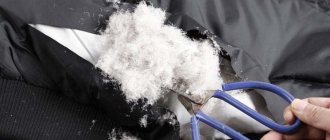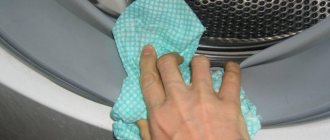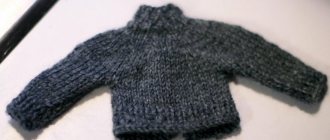Cotton is in great demand because it is a natural fabric. When buying things made from natural fiber, many people wonder how this product will behave. Does cotton shrink after washing? Maybe it will shrink, maybe not. Also, not everyone knows how to properly wash cotton so that it does not become deformed. This fabric has its own characteristics, so you need to know how to properly care for it.
During the hot season, cotton products are very popular and practical. They fit nicely to the body, allow air to pass through, and are lightweight. Another advantage is that if there is a sharp change in temperature, a cotton product will be able to warm you up.
Properties of cotton fabrics
Before talking about whether cotton shrinks in hot water, it’s worth talking about the properties of this material. Products made from this fabric are very durable and last a long time. Air penetrates well through the fabric due to the natural nature of the fiber. You can wash things made from this material at temperatures up to 40 degrees, but there are still disadvantages to this fabric:
- it wrinkles a lot;
- takes a long time to dry;
- may take on a yellowish tint when exposed to sunlight;
- shrinks during washing.
Cotton has these main disadvantages. Therefore, despite its lightness and good quality, not every woman will decide to buy a product made from this particular material. It's not entirely practical to use. It is because of such disadvantages that many consider cotton products capricious and refuse to purchase them. The main question when purchasing is: does cotton shrink after washing? Since the most important reason for refusing to purchase is the deformation of the product during this process.
Durable, inexpensive and comfortable
Cotton is obtained from mature cotton fruits. The fabric is an interweaving of thin fluffy and soft fibers, slightly twisted around its own axis. The length of the raw material fibers largely determines the type of finished fabric. So, calico, chintz, flannel, cambric, poplin, twill, flannel, etc. have a cotton base.
Depending on the density of the material, they sew from it:
- summer clothes;
- underwear;
- jackets, trousers, skirts, dresses for cold weather;
- bedding, curtains, tablecloths and other household textiles.
@be_fahionable, @sartoria53, @beddingkatoon, @faby_d27
Properties of cotton fabric
It has both significant advantages and some disadvantages. However, knowing the basic rules of care and following them during operation, problems can be avoided.
Advantages of the material:
- Strength, lightness, softness.
- Hypoallergenic.
- Hygroscopicity.
- High degree of thermal insulation. A lot of air is retained between the numerous fibers, thanks to which the product retains body heat well.
- Affordability.
- Not damaged by insects.
Flaws:
- It gets dirty easily and doesn't wash well.
- Shrinks after washing.
- White things turn yellow over time.
Individual characteristics:
- dries slowly;
- easily wrinkles;
- has average abrasion resistance;
- lends itself well to painting.
Preparation
Preparation for washing occurs according to the following scheme:
- Before the procedure, the product must be turned inside out.
- If the item is heavily soiled, it should be soaked first, otherwise it may not wash off. The washing temperature is too low to remove serious stains.
- Another option for removing stains is to soak the item, just like in the old days. To do this, you need to pour a lot of water into a bowl, add detergent or detergent (you can use ammonia with peroxide) and leave it all for half an hour. After which you need to rinse the item, and the stains should be washed off. When washed by hand, deformation and shrinkage of the item will not occur.
Ironing
Before ironing, be sure to check the material for stains; if you iron them out, they can settle firmly in the fibers and subsequently cannot be removed. Ironing items while slightly damp will help prevent creases and creases. If the fabric is still dry, spray the material with water during ironing or use a similar function on the iron.
For better smoothing, use the steam function, if available.
For large items such as duvet covers, sheets, curtains or tablecloths, first fold them several times and iron first on one side, then on the other, and so on. Repeat the manipulations until the product is completely ironed.
Does cotton shrink when washed?
Material made from natural resources can change its size, shrinking in size. Therefore, you should not wash it at temperatures above 60 degrees.
You should always study the tag on the product. There, as a rule, the maximum water temperature for washing, the ironing mode and how to properly dry cotton items are indicated. If you neglect these rules, you can ruin the thing. It may fade or turn yellow if the material of the product was white.
Does 100% cotton shrink after washing? Yes. Therefore, new things need to be washed carefully, preferably in cool water. And it’s better, of course, to do it manually. When washed in a machine and automatically dried, the item will shrink in any case. To avoid this, it is best to let the product dry naturally. So to the question, does cotton shrink after the first wash, the answer is obvious.
How to avoid?
We already know that cotton is shrinking. But what to do? How to avoid deformation of things? Follow these guidelines:
- Be sure to read the label.
- Light-colored items should be washed separately from colored items. There is a high probability of shedding.
- If the clothes are not very dirty, they can be washed by hand or at a low temperature in the washing machine.
- Any stains on the fabric must be removed first. Washing in hot water can set in stains even more, adding extra work.
- Before the procedure, all clothing should be turned inside out and fastened with existing zippers and buttons.
- Small items should be washed in a special bag. Otherwise they may become deformed and tear.
- Washing should be carried out in the recommended thermal mode - no more than 60 ° C. The manufacturer of the items warns about this.
- It is better to wash loose cotton items by hand or at temperatures up to 45 °C. These items should first be soaked in soapy liquid.
- It's easier with white underwear. It can be washed with powder at temperatures up to 60 ° C, and bleaching components can be added. Thanks to them, stains will be removed.
- Products with patterns are best washed with a special, gentle powder. It will preserve the color and brightness of the fabric.
- After using powders, be sure to rinse things so that no detergent components remain on the fabric.
- If the material is dense, with a well-fixed pattern, then when washing you can set it to a strong mode and dry it. And if the fabric, on the contrary, is loose, then after washing it is better not to spin it and not dry it automatically.
- After washing, the items are taken out and dried in the usual way. This should be done by turning them inside out; you can hang them on a rope or dryer in a straightened form. You should not hang things in the sun, and the place should be well ventilated, otherwise yellow spots may appear.
Soak
Heavily soiled cotton items require soaking before the main wash. For wardrobe items and curtains made of openwork and thin fabrics, it is better to choose a liquid or gel when soaking. After drying, they will not leave streaks on the surface.
White cotton models are pre-treated as follows:
- Things are immersed in clean water for 2-3 hours. Then they are wrung out. Soaking is carried out only at room temperature. Hot water will further embed dirt and possible stains into the fibers.
- Soda (table or soda ash) is dissolved in a glass of hot water and poured into a washing container (1-2 tablespoons of the substance are required for 10 liters of water). The laundry is kept in the solution for half an hour.
- Rub a quarter of a bar of laundry soap into a separate bowl or pour 2 tbsp. l. washing powder for white fabrics. The detergent is thoroughly diluted with hot water and added to the container with laundry. Things should remain in this composition for another 2-2.5 hours.
- The products are pressed again and a decision is made on their further processing.
For tulle and muslin curtains (with the exception of kitchen ones), this procedure is sufficient, and all that remains is to rinse them.
Socks are soaked separately from other items, having previously been rubbed on the inside with laundry soap. Used handkerchiefs and models with embroidery are also pre-washed in the container. They are soaked in a slightly warm saline solution (30 g per 1 liter), and then the main wash is done in it.
This may be useful: How to whiten socks.
Colored cotton clothes are soaked in warm water with a special detergent. You should not use laundry soap, as the alkali it contains can cause the fabric to fade. To prevent hardness salts from damaging the color, soften the water with baking soda or ammonia (1 tsp per 5 l). The soaking time for dyed fabric ranges from 15 to 30 minutes. The more a thing sheds, the shorter the time period should be .
It is not recommended to immerse knitted fabric and velvet in water for a long time. Therefore, such things do not need pre-washing at all.
When first processing chintz and denim, add 3 tbsp to the water. l. salt or 5-6 tbsp. l. 9% vinegar per 10 liters. This will minimize shedding if the jeans are dyed.
We wash things by hand
Does cotton shrink after hand washing? Items made from fine fabrics are best washed by hand. When washing for the first time, you need to do this to know whether the item will fade or not. Even gentle washing in a machine can cause it to become deformed, which hand washing will not do.
The ideal washing option is a soap solution and water at a temperature not exceeding 40 °C. Laundry soap will be enough. It washes well and does not cause allergic reactions. You can, of course, use washing powder, but only one that is suitable for cotton.
Failure of all attempts: what to do?
Making things smaller, and only in the necessary places, is not just a difficult task, but often impossible. Synthetic and mixed fabrics are the most difficult to shrink.
It is almost impossible to reduce items with embroidery and other decor, elegant clothes, as well as those that cannot be subjected to wet processing without damaging the item.
If a product made of cotton, linen or wool does not shrink properly, the processing process can be repeated. But in cases where the methods of influence are ineffective, you will have to either say goodbye to the thing or give it away for rework.
Adviсe
Do cotton items shrink? Yes, they sit down. But there are options to fix this:
- It is necessary to soak the shrunken item for 45 minutes in warm water.
- You can also wash the item using the light wash cycle at temperatures up to 30°C.
- While still wet, the item needs to be pulled a little in different directions, but you should do this carefully so as not to deform the fabric.
- When drying, you should periodically stretch cotton items to the required size.
- Another option for stretching a product is steaming. Using an iron and thin gauze, you need to steam the item and then stretch it while it is still warm.
- To increase shrinkage, you can soak it in a solution with peroxide, then stretch it a little and dry it on a horizontal surface.
Drying clothes outdoors
After washing your clothes, go outside and check the level of contamination in the places where you plan to hang things (beams or ropes). If there is no rust or dirt, you can safely hang out your laundry. When planning to dry clothes in the sun, it is recommended to turn them inside out to avoid color loss.
We remind you that not all clothes can be dried in areas exposed to direct sunlight. Drying for too long in windy weather will deteriorate the quality of the fabric - the clothes will be too fragile and will quickly tear.
In winter, when rinsing clothes, add a small amount of salt to the water. This technique will prevent the laundry from freezing while drying in the cold. And before hanging your washed clothes, wipe down the rungs or ropes with a rag containing a saline solution.
A simpler option for drying in the winter is in garages, basements and other fairly large rooms where there is air circulation. Note that in this way, clothes will dry twice as quickly as outside.











